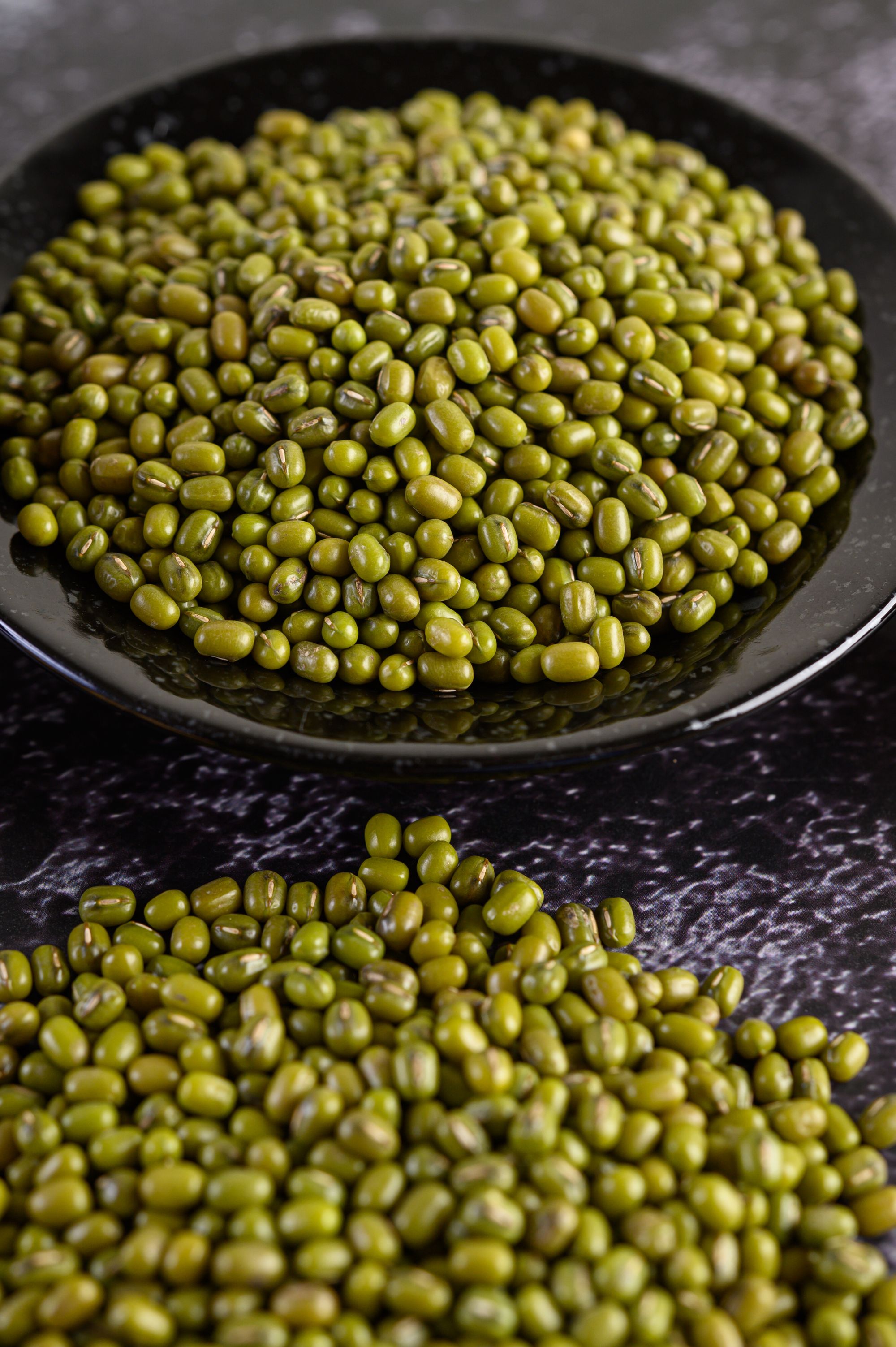If you’re trying to add more protein to your meals, moong (or mung beans) is one of the easiest ways to do it.
Whether you call it moong dal, green moong, split moong, or moong sprouts, this humble ingredient is everywhere—in Indian homes, college messes, and even in fancy diet plans now.
And the best part?
It’s plant-based, light on the stomach, and super versatile.
When I was growing up, my mother used to say, “Moong is the king of dals. Easy to digest, easy to cook.”
Turns out, she wasn’t wrong. Moong is packed with protein, fiber, and essential vitamins. A 100-gram serving of raw green moong has about 24 grams of protein. Cooked moong has a little less because of the water, but it’s still a solid protein source—especially for vegetarians. This makes it fantastic for satiety, muscle health and sustained energy throughout your day.
So today, let’s talk about 10 high-protein moong recipes that actually fit into your everyday Indian cooking.
1. Moong Dal Chilla (Protein Pancake)
This one’s already trending in searches—and for good reason.
It’s basically your Indian version of a healthy pancake, but made with soaked moong dal batter.
Pro tip: For extra protein, stuff your chilla with paneer or tofu bhurji. Or fold in some leftover sprouts for crunch.

Get more amazing moong dal chilla variations
2. Green Moong Sprout Salad
Sprouted moong is like nature’s protein snack.
Just soak green moong overnight, drain, and keep it in a colander for a day to sprout.
Mix with chopped onions, tomatoes, lemon juice, and a pinch of chaat masala.

Tip: If your sprouts feel too hard, steam them for just 2 minutes. They’ll still be crunchy but easier to digest.
Try more mun sprout salad recipes
3. Moong Dal Tadka
Simple, comforting, and full of protein.
Boil split yellow moong dal till soft. Add a tadka. Pair it with rice or roti for a meal that’s light yet nourishing.

Many of us grew up eating this after falling sick—it’s easy on the tummy but still gives you strength.
4. Moong & Millet Khichdi
Khichdi is India’s original one-pot meal.
Swap out the rice for millets like bajra or jowar to boost fiber. Use moong dal for protein.
It’s perfect for busy days when you want comfort food but don’t want to feel sluggish after eating.

5. Moong Dal Idli
Who says idli has to be made with rice?
They’re soft, fluffy, and protein-packed—great for breakfast or tiffin.

Did You Know?
Moong dal has been used in Indian cooking for over 2000 years. It’s mentioned in Ayurveda as a sattvic food—easy to digest and great for building strength.
6. Moonglet (Delhi-Style Moong Omelette)
This is like a chilla, but fluffier.
Street vendors in Delhi make this by adding eno or baking soda to the moong batter.
Result? A thick, soft, almost omelette-like dish—but vegetarian and loaded with protein.
Top with onions, coriander, and spicy chutney.

7. Moong Dal Halwa
Yes, halwa can have protein too.
Traditional moong dal halwa is usually made with ghee and sugar, but you can balance it out by reducing the sugar and using jaggery.
It’s festive, but hey—sometimes your soul needs that too.

8. Moong Dal Soup
If you’re looking for something global but familiar, moong dal soup hits the spot.
It’s lighter than cream-based soups but gives you that cozy, winter-evening comfort.

9. Moong Dal Dhokla
Soak moong dal, grind it with green chilies and ginger, and steam it like dhokla.
It’s spongy, tangy, and full of plant protein.
Drizzle with mustard seeds and curry leaves for the final touch.

Try more recipes of mung dal dhokla
10. Moong Bhajiya (For the Cheat Days)
Let’s be real—not every meal has to be ultra-healthy.
Sometimes, you just need hot, crispy moong dal fritters with chai on a rainy day.
Soak moong dal, grind coarsely, mix with onions and spices, and deep-fry.
It’s protein and indulgence in one plate.

Try more pakoda recipes with mung dal
Green Moong vs Yellow Moong: What’s the Difference?
| Type | Green Moong (Whole Moong) | Yellow Moong (Split Moong Dal) |
|---|---|---|
| What it is | Whole mung beans with skin | Dehusked, split green moong |
| Protein (per 100g raw) | 24g | 24g (almost the same!) |
| Fiber | High (because of the green skin) | Lower fiber (easier to digest) |
| Cooking time | Longer (unless sprouted) | Cooks faster, no soaking needed |
| Best for | Sprouts, chilla, soups, curries | Khichdi, halwa, tadka dal |
| Taste & texture | Nutty, slightly chewy | Mild, soft, light on stomach |
Protein Comparison Table
| Ingredient | Protein (per 100g raw) |
|---|---|
| Green Moong (Whole) | 24g |
| Yellow Moong (Split) | 24g |
| Chickpeas (Chana) | 19g |
| Rajma (Kidney Beans) | 22g |
| Paneer | 18g |
| Tofu | 10g |
| Eggs | 13g |
Source: USDA & Indian Food Composition Tables
Moong is affordable, easy to find, and suits every kind of meal plan—whether you’re looking for protein for fitness, or just simple home food.
It’s popular in Indian kitchens, but it’s also gaining fans in the US, UK, and other places where people are searching for plant-based protein options.
So next time you’re planning your weekly menu, think of moong as your flexible, friendly ingredient.
It’s not just dal—it’s chilla, salad, soup and more.
Next: 10 Easy & High-Protein Soya Chunks Recipes for Everyday Meals & Fitness
Your Turn:
Have a special moong recipe from your home?
Share it with your friends, family—or better yet, share it with the world on Cookpad!
Happy cooking!


